The innovative SS Great Britain, launched in 1843, was the first iron-hulled, screw-propelled ship to cross any ocean and led mercantile history into British domination in the late nineteenth century. Standard practice of naval and merchant ship construction derived from this ship. The compartmented hull, unprecedented 1,500-horsepower engine with chain drive, and many other seminal features were the designs of Isambard Kingdom Brunel. New design features included a balanced rudder, an electric log, a double bottom, and water-tight bulkheads.
1840-1849
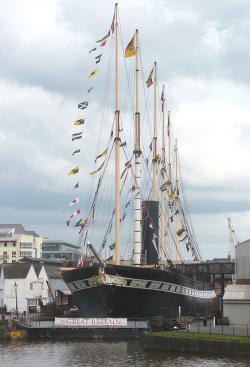
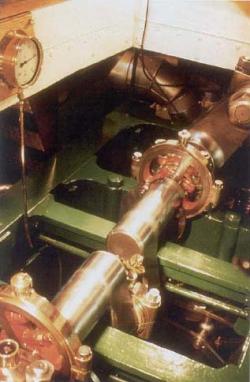
The oscillating steam engine, built by John Penn & Sons, is located aboard the famed paddle steamer Diesbar. Diesbar is the second oldest of a fleet of nine paddle steamers in Dresden. What makes the Diesbar unique is its coal fueled engine and single deck design. The John Penn and Sons engine that runs the steamer is the oldest operational marine steam engine in the world. It has been in operation for over 165 years.
The Wheeling Suspension Bridge was the first bridge to span the Ohio River. It was initially completed in 1849, but destroyed by a tornado five years later. The bridge was rebuilt in 1856. The replacement bridge has the same general appearance of the original structure; the massive towers, anchorage housings, and island approach are all the original stone masonry.
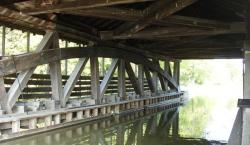
The significance of the 15-mile Whitewater Canal was not in its ability to create a profit, but rather its effect on the economic growth of the Whitewater River Valley, considered the gateway to the interior of Indiana. Before the canal, travel was challenging. Most waterways in Indiana were only navigable by canoe, and the alternative - horse and wagon - was difficult, slow and expensive.
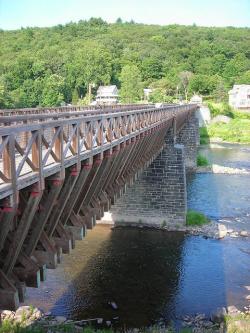
The Delaware Aqueduct provided an important transportation link between the Pennsylvania's coalmines and New York's booming industrial marketplace. It is the earliest surviving work of John A. Roebling, who designed the Brooklyn Bridge 30 years later. The cable anchorage system first used on this project was also used on the Brooklyn Bridge. The aqueduct is patterned after Roebling's design of the Pennsylvania Canal over the Allegheny River, and is the oldest metal strand cable suspension bridge still standing in the U.S.
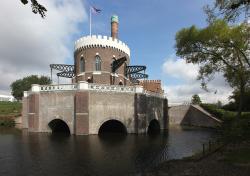
HaarlemmermeerCountry: NetherlandsWebsite: http://www.asme.org/about-asme/history/landmarks/topics-m-z/pumping/-153-cruquius-pumping-station-%281849%29Creator: Cruquius, Nicolaus Samuel , Beijerinck, Jan Anne
This is one of three nearly identical pumping stations that drained the Haarlemmermeer (Haarlem Lake), 1849- 52, then continued to maintain the polder's water table for more than 80 years. The Haarlemmermeer area covers 45,000 acres (about 70 square miles) in a triangular region between the cities of Amsterdam, Haarlem, and Leiden.
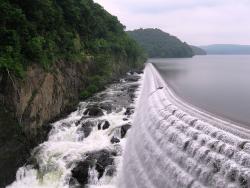
Inferior water and the lack of a sufficient water supply prompted public pressure to find a significant water source for the 360,000 of people living in New York City at the time. Studies determined that the Croton River, 40 miles north of the city, was the best available source. The original system served as a prototype for large-scale water supply projects across America.
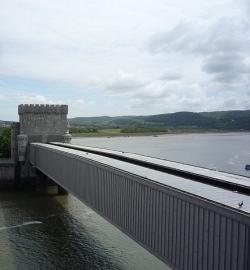
Built by Robert Stephenson to carry the Chester and Holyhead Railway across the River Conwy, this bridge was erected between 1846 and 1848. It consists of a single span 400 feet long, formed by two parallel rectangular wrought iron tubes, each weighing 1300 tons. Masonry towers were built on the abutments and topped with battlements and turrets to harmonize with the nearby Conwy Castle. The Conwy Tubular Bridge was the first railway bridge in which trains ran through the main girders. It represents a pioneering use of wrought iron for bridges.
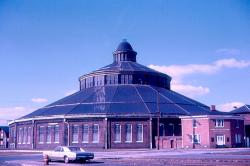
"The roundhouse is an amazing survivor of an important era in American engineering and architectural history. Eric DeLony, chief of the National Park Service's Historic American Engineering Record, has called it 'the most important surviving cast-iron framed building in North America.'"
From: The Baltimore and Ohio Railroad Martinsburg Shop Complex: Historic Structure Report. By John P. Hankey, August, 2000.


